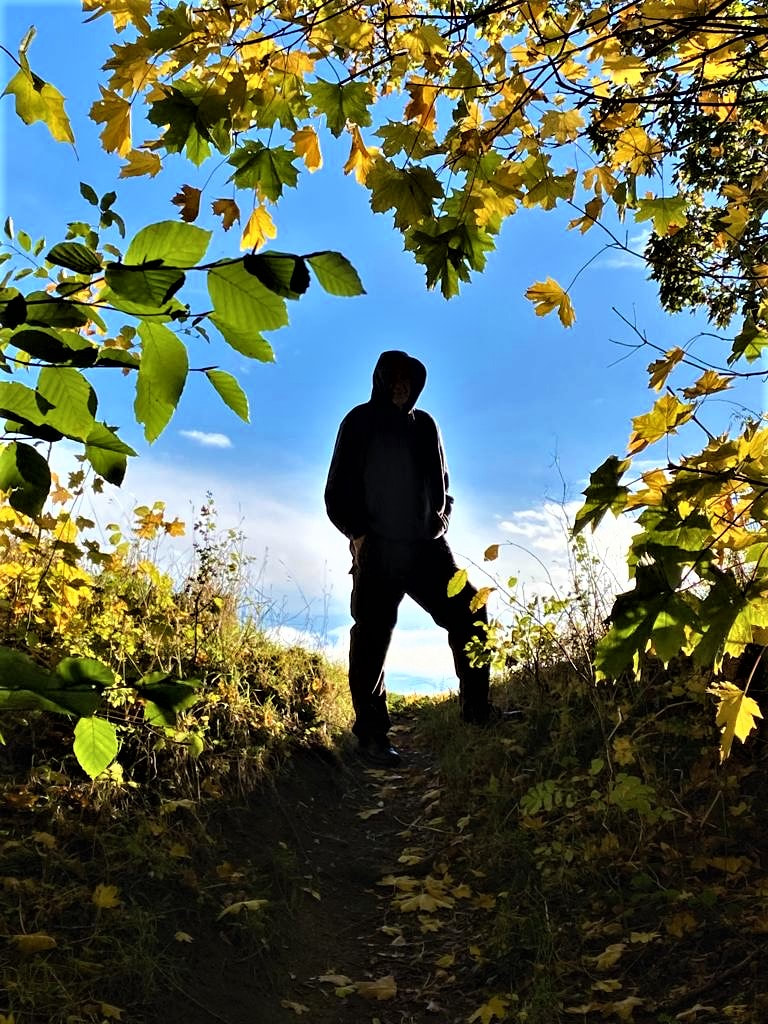|
'95% of what we think we know, we have simply accepted from what other people have told us.' (Dennis Hiebert) Nothing adds up. How can we identify hidden assumptions, implicit agendas and vested interests that lay behind what we see, hear and read in the media? Perhaps the answer to this question has rarely been so critical. Democracy and social cohesion within and between peoples and nations are threatened by manipulation and misrepresentation of what we may ordinarily regard as truth. Following writer Mark Twain, actor Denzel Washington commented famously, ‘If you don’t read the news, you’re uninformed. If you do read the news, you’re misinformed.’ Take international news in the UK. Why are we so focused on Russia-Ukraine and Israel-Gaza? Why haven’t we noticed, apart from the occasional glance, the terrible civil wars in Sudan, Myanmar or Democratic Republic of Congo? Why do we call Russia’s brutal intervention in Ukraine a ‘full-scale invasion’? Why do we assume that increasing NATO size-spend is the only solution? If Israel’s bombing is indiscriminate, why has it killed, proportionately, so few ‘adult men’? Why didn’t we see outraged street demonstrations against horrific, widespread atrocities by Daesh? These are profoundly important, deeply complex and extremely painful issues and we rarely have access to the underlying research or information that could help us, as ordinary and concerned citizens of the world, to discern and decide how to act. We are presented with multiple, competing viewpoints and demands and this can feel both perplexing and paralysing. I don’t know the answers to such questions yet I do believe they should play at least some part in shaping my response. I will share some considerations that may help us to avoid sleepwalking blindness. As we’re exposed to news reports, what are we noticing and not noticing? How far does what we’re noticing appear to confirm what we already believe or want to believe? How open are we to having our assumptions, our preconceived beliefs and ideas, challenged to reveal something different or new? Why is the news presenter or media channel presenting this particular story or angle? What do they want us to believe, think, feel or do? Who or what is being excluded by the reporter’s narrative? Whose voice, perspective or experience is being ignored or filtered out? Behind the scenes: who owns and-or funds the media channel, the presented report or the research that underpins it? How rigorously are research methods tested to avoid implicit bias? Are views and experiences presented in a report genuinely representative of a wider and diverse population, or different sides to a conflict? In interpreting statistics, is a reporter presenting a case selectively, or cherry-picking results to show or advocate a particular stance? In short, be sceptical – and look for evidence that supports or contradicts the research-reporter’s ‘news’.
20 Comments
‘The map of the world is always changing; sometimes it happens overnight. All it takes is the blink of an eye, the squeeze of a trigger, a sudden gust of wind.’ (Anderson Cooper) I ordered a large and colourful map of South East Asia for my bedroom wall recently. When it arrived, it was subtly different to the one that had been advertised and clearly depicts a Chinese geopolitical view of the region. Taiwan is colour-coded the same as China and the internationally-disputed 9-dash line is boldly marked around the whole of the South China Sea. It struck me how simple representations on a map can both reveal and aim to create a very specific cultural and political view of the world. I have another large and colourful map of the Earth mounted on the wall above my desk. This one shows the world as ‘upside down’, although the names on the ‘countries’ are still written the ‘right way up’. It feels strange and disorientating to look at and reveals, experientially, how fixed we can become in the representations we hold of of the world we have been taught and learned since childhood. A world map is also a mental map. Every portrayal is an implicit human construct. Nothing is simply ‘how it is’. I took my mountain bike for repairs last week after pretty much wrecking it off road. In the same week, I was invited to lead a session on ‘use of self’ in coaching. I was struck by the contrast in what makes a cycle mechanic effective and what makes the difference in coaching. The bike technician brings knowledge and skill and mechanical tools. When I act as coach I bring knowledge and skills too - but the principal tool is my self.
Who and how I am can have a profound impact on the client. This is because the relationship between the coach and client is a dynamically complex system. My values, mood, intuition, how I behave in the moment…can all influence the relationship and the other person. It works the other way too. I meet the client as a fellow human being and we affect each other. Noticing and working with with these effects and dynamics can be revealing and developmental. One way of thinking about a coaching relationship is as a process with four phases: encounter, awareness, hypothesis and intervention. These phases aren’t completely separate in practice and don’t necessarily take place in linear order. However, it can provide a simple and useful conceptual model to work from. I’ll explain each of the four phases below, along with key questions they aim to address, and offer some sample phrases. At the encounter phase, the coach and client meet and the key question is, ‘What is the quality of contact between us?’ The coach will focus on being mentally and emotionally present to the client…really being there. He or she will pay particular attention to empathy and rapport, listening and hearing the client and, possibly, mirroring the client’s posture, gestures and language. The coach will also engage in contracting, e.g. ‘What would you like us to focus on?’, ‘What would a great outcome look and feel like for you?’, ‘How would you like us to do this?’ (If you saw the BBC Horizon documentary on placebos last week, the notion of how a coach’s behaviour can impact on the client’s development or well-being will feel familiar. In the TV programme, a doctor prescribed the same ‘medication’ to two groups of patients experiencing the same physical condition. The group he behaved towards with warmth and kindness had a higher recovery rate than the group he treated with clinical detachment). At the awareness phase, the coach pays attention to observing what he or she is experiencing whilst encountering the client. The key question is, ‘What am I noticing?’ The coach will pay special attention to e.g. what he or she sees or hears, what he or she is thinking, what pictures come to mind, what he or she is feeling. The coach may then reflect it back as a simple observation, e.g. ‘I noticed the smile on your face and how animated you looked as you described it.’ ‘As you were speaking, I had an image of carrying a heavy weight…is that how it feels for you?’ ‘I can’t feel anything...do you (or others) know how you are feeling?’ (Some schools, e.g. Gestalt or person-centred, view this type of reflecting or mirroring as one of the most important coaching interventions. It can raise awareness in the client and precipitate action or change without the coach or client needing to engage in analysis or sense-making. There are resonances in solutions-focused coaching too where practitioners comment that a person doesn’t need to understand the cause of a problem to resolve it). At the hypothesis stage, the coach seeks to understand or make sense of what is happening. The key question is, ‘What could it mean?’ The coach will reflect on his or her own experience, the client’s experience and the dynamic between them. The coach will try to discern and distinguish between his or her own ‘stuff’ and that of the client, or what may be emerging as insight into the client’s wider system (e.g. family, team or organisation). The coach may pose tentative reflections, e.g. ‘I wonder if…’, ‘This pattern could indicate…’, ‘I am feeling confused because the situation itself is confusing.’ (Some schools, e.g. psychodynamic or transactional analysis, view this type of analysis or sense-making as one of the most important coaching interventions. According to these approaches, the coach brings expert value to the relationship by offering an explanation or interpretation of what’s going on in such a way that enables the client to better understand his or he own self or situation and, thereby, ways to deal with it). At the intervention phase, the coach will decide how to act in order to help the client move forward. Although the other three phases represent interventions in their own right, this phase is about taking deliberate actions that aim to make a significant shift in e.g. the client’s insight, perspective, motivation, decisions or behaviour. The interventions could take a number of forms, e.g. silence, reflecting back, summarising, role playing or experimentation. Throughout this four-phase process, the coach may use ‘self’ in a number of different ways. In the first phase, the coach tunes empathetically into the client’s hopes and concerns, establishing relationship. In the second, the coach observes the client and notices how interacting with the client impacts on him or herself. The coach may reflect this back to the client as an intervention, or hold it as a basis for his or her own hypothesising and sense-making. In the third, the client uses learned knowledge and expertise to create understanding. In the fourth, the coach presents silence, questions or comments that precipitate movement. In schools such as Gestalt, the coach may use him or herself physically, e.g. by mirroring the client’s physical posture or movement or acting out scenarios with the client to see what emerges. In all areas of coaching practice, the self is a gift to be used well and developed continually. ‘What is most important about any event is not what happened, but what it means. Events and meanings are loosely coupled: the same events can have very different meanings for different people because of differences in the schema that they use to interpret their experience.’ These illuminating words from Bolman & Deal in Reframing Organisations (1991) have stayed with me throughout my coaching and OD practice.
They have strong resonances with similar insights in rational emotive therapy and cognitive behavioural therapy. According to Ellis, what we feel in any specific situation or experience is governed (or at least influenced) by what significance we attribute to that situation or experience. One person could lose their job and feel a sense of release to do something new, another could face the same circumstances and feel distraught because of its financial implications. What significance we attribute to a situation or experience and how we may feel and act in response to it depends partly on our own personal preferences, beliefs, perspective and conscious or subconscious conclusions drawn from our previous experiences. It also depends on our cultural context and background, i.e. how we have learned to interpret and respond to situations as part of a wider cultural group with its own history, values, norms and expectations. A challenge and opportunity in coaching and OD is sometimes to help a client (whether individual or group) step back from an immediate experience and reflect on what the client (or others) are noticing and not noticing, what significance the client (or others) are attributing to it and how this is affecting emotional state, engagement, choices and behaviour. Exploring in this way can open the client to reframing, feeling differently and making positive choices. In his book, Into the Silent Land (2006), Laird makes similar observations. Although speaking about distractions in prayer and the challenges of learning stillness and silence, his illustrations provide great examples of how the conversations we hold in our heads and the significance we attribute to events often impact on us more than events themselves. He articulates this phenomenon so vividly that I will quote him directly below: ‘We are trying to sit in silence…and the people next door start blasting their music. Our mind is so heavy with its own noise that we actually hear very little of the music. We are mainly caught up on a reactive commentary: ‘Why do they have to have it so loud!’ ‘I’m going to phone the police!’ ‘I’m going to sue them!’ And along with this comes a whole string of emotional commentary, crackling irritation, and spasms of resolve to give them a piece of your mind when you next see them. The music was simply blasting, but we added a string of commentary to it. And we are completely caught up in this, unaware that we are doing much more than just hearing music. ‘Or we are sitting in prayer and someone whom we don’t especially like or perhaps fear enters the room. Immediately, we become embroiled with the object of fear, avoiding the fear itself, and we begin to strategise: perhaps an inconspicuous departure or protective act of aggression or perhaps a charm offensive, whereby we can control the situation by ingratiating ourselves with the enemy. The varieties of posturing are endless, but the point is that we are so wrapped up in our reaction, with all its commentary, that we hardly notice what is happening, although we feel the bondage.’ This type of emotional response can cloud a client’s thinking (cf ‘kicking up the dust’) and result in cognitive distortions, that is ways of perceiving a situation that are very different (e.g. more blinkered or extreme) than those of a more detached observer. In such situations, I may seek to help reduce the client’s emotional arousal (e.g. through catharsis, distraction or relaxation) so that he or she is able to think and see more clearly again. I may also help the client reflect on the narrative he or she is using to describe the situation (e.g. key words, loaded phrases, implied assumptions, underlying values). This can enable the client to be and act with greater awareness or to experiment with alternative interpretations and behaviours that could be more open and constructive. Finally, there are wider implications that stretch beyond work with individual clients. Those leading groups and organisations must pay special attention to the symbolic or representational significance that actions, events and experiences may hold, especially for those from different cultural backgrounds (whether social or professional) or who may have been through similar perceived experiences in the past. If in doubt, it’s wise ask others how they feel about a change, what it would signify for them and what they believe would be the best way forward. What is real, what is true, how can we know? These are questions that have vexed philosophers for centuries. In more recent times, we have seen an increasing convergence between philosophy and psychology in fields such as social constructionism and existential therapy. How we experience and make sense of being, meaning and purpose is inextricably linked to how we behave, what we choose and what stance we take in the world. As a Christian and psychological coach, I’m intrigued by how these fundamental issues, perspectives and actions intertwine with my beliefs, spirituality and practice. Descartes once wrote, ‘If you would be a real seeker after truth, you must at least once in your life doubt, as far as possible, all things.’ It’s as if we must be prepared to suspend all assumptions about ‘what is’, to explore all possibilities and dare to think the unthinkable in order to grow and make our best contribution. Things are not always as they at first appear. There are sometimes multiple explanations for the same phenomenon, depending on the frame of reference we or others use to interpret it (see, for instance, Gareth Morgan’s seminal work, Images of Organisation, 1986). We are sometimes blinded to what’s in front of us by our prejudices, preconceptions, cultural constraints or rigid views of the world. It can be hard to maintain healthy scepticism without cynicism. I see it with clients, sometimes in myself too. A sense of being trapped by a fixed Gestalt, a cognitive distortion, an inherited or learned belief system. An inability to see, to recognise the box that we’re in, never mind to see or think outside of it. An avoidance of deep, difficult questions because of the discomfort, confusion or anxiety they may evoke. If we’re not careful, if we can’t find the right help when we need it, it may limit our lives and our learning. I think this is where coaching can play a very important role, helping pose and address some deep questions. Nick Bolton commented insightfully in Coaching Today that, ‘To explore a coaching issue existentially is to understand the relationship that the presenting problem has to the human condition to which it is a response, and to remain focused on enabling a change of perspective that allows the client to move past their current challenge.’ He also provided some helpful examples: ‘For instance, how is a client’s procrastination around something that seems to matter to her a failure to remember that life comes to an end? How is a client’s need to be unconditionally loved by his partner an attempt to deal with existential rather than interpersonal isolation? (And the solutions are very different things). How is someone’s lethargy simply a part of their fear of taking responsibility for their life?’ (July 2013, p17) A metaphysical, existential or theological dimension can shift the entire paradigm of the coaching conversation. The question of whether a client should apply for this or that job is influenced by her sense of purpose. If she is willing to consider that God may exist and have a plan for her life, the whole situational context will change. It can be a dizzying and exciting experience, yet it’s really a question of how courageous and radical we and the client are prepared to be. I had a new, short, mini-article published online in About Leaders this week called, ‘What is really going on here?’
http://www.aboutleaders.com//bid/176196/leadership-dynamics-what-is-really-going-on-here?source=Blog_Email_[Leadership%20Dynamics%3A. It introduces examples of different frames of reference we may use when working with people as a leader or coach. I would love to hear what you think, what frames you use and what experiences you have in this area. Looking forward to hearing from you! Christmas time. A special time to enjoy family, friends and festivities. For many of us, it’s a time off work, chance to relax, eat, drink and party. There is, however, a deeper meaning to the event, a meaning embedded in its very name: Christ-mas. For Christians, it represents a celebration of a unique and critical moment in history, the birth of Jesus Christ. This distant event has important implications for my work in leadership, OD, coaching and training.
The idea of God as a human child should shock, confuse and amaze us. After all, if God exists and if he really is everything the Bible says he is, e.g. all powerful, all knowing, an invisible being, it makes no sense to imagine all those qualities in a vulnerable, dependent, human baby. The arrival of Jesus, the transcendent become immanent, is a profoundly paradoxical event. Little wonder so many people today find it difficult to imagine, understand or believe. I find it stimulating and humbling to reflect on this. It calls me to ask serious questions of myself, my life and my work. Whatever I’m doing, whatever role I’m playing, my work is essentially about people, developing people, releasing potential, building a better organisation, a better world. So I will share five short thoughts and meditations this Christmas kairos evokes for me. Please share your reflections and responses with me too. I’m keen to hear. 1. God as human. The appearance of God in human form (Gestalt) reminds me of the notion of contact in Gestalt psychology, a deep sense of presence and connection with people. It’s about intimacy, empathy, touch, being-with in the here and now. In my work, I sometimes become so focused on the task that I can lose touch with myself, with others, with God. Incarnation is about coming close. How can I develop and sustain a better quality of contact? 2. God as child. The Christ child reveals God at his most vulnerable, a willingness to take risks and to depend on others. It reminds me of notions of attachment in psychodynamic psychology. It sounds inconceivable to imagine God placing his life, his wellbeing, in human hands. Yet it challenges notions of arrogant, egotistical, macho leadership. It models humility, trust, a working with others to achieve a purpose. How can I become more humble and inclusive? 3. God as love. In becoming human, God enters human experience. Jesus’ loving, empathetic way of relating to people reminds me of notions of relationship, positive regard and authenticity in humanistic and person-centred psychology. He balances ‘grace’ with ‘truth’ in a way that I find very difficult. He demonstrates altruistic self-sacrifice, critical friendship and tough love. How can I be better and more consistent at putting others’ best interests first? 4. God as truth. The arrival of God in human history in such a dramatic, physical way challenges previous notions of God and of humanity. God challenges all presuppositions, cultural perspectives and traditions. This reminds me of addressing limiting beliefs in cognitive psychology, fixed Gestalts in Gestalt psychology and personal-social constructs in social constructionism. How can I work with others to explore and create fresh possibilities, fresh paradigms? 5. God as saviour. The Bible depicts Jesus Christ entering the world to save a humanity that is lost. This notion of lost-ness reminds me of ‘angst’ in existential and psychodynamic psychology, a deep feeling of alienation from oneself and others and from any sense of ultimate meaning and purpose. It’s as if Jesus resolves our alienation from God and the world to bring new hope. How can I ensure my work brings fresh meaning and hope to others? I wish you a merry Christmas and a very happy new year! Gareth Morgan in Images of Organisation (1986) commented, ‘People have a knack for getting trapped in webs of their own creation’. It’s as if we can create ways of seeing the world personally and between us that become fixed and prevent us seeing alternatives. According to social construct theory, we never really see the world for what it is, but rather as how we learn to perceive and make sense of it. This means that we attribute meaning to people, objects and situations, rather than perceive them objectively.
Personal and social construct psychology are interested in how people, groups, organisations and societies create their own ‘reality’. The language, images, metaphors and stories we use both reveal and reinforce how we see, experience and respond to the world. So, for instance, if we talk about a team, an organisation, an organisational structure etc, it may be to us as if those abstract entities actually exist in their own right, rather than simply as a way of thinking about and organising our psychosocial perceptions and experience. Depending on what images, beliefs, values and assumptions we hold about such ‘constructs’, we can find ourselves holding fixed views that blind us to alternative ideas and options. Social construct coaching is not about unearthing ‘the truth’ but exploring alternative constructs. Social construct coaching aims to help a person or group to surface, examine and challenge the constructs they have inherited and created and to experiment with creating alternative constructs to see what they may reveal, release and enable. Sample techniques: *Invite the coachee or group to depict a real work scenario, e.g. by drawing on paper, using objects (e.g. toys) or configuring people in a room to see what picture (or ‘construct’) emerges. *Encourage the coachee or group to reflect on what has emerged, e.g. who or what have they included and why, how have they positioned themselves in relation to others and why etc. *Challenge the coachee or group’s assumptions, e.g. who or what is missing, what evidence is there to support any assumptions, what evidence could point towards contrary conclusions? *Urge the coachee or group to consider how people from diverse situations might perceive or approach the scenario, e.g. from different genders, cultures, ages, jobs, positions in hierarchy. *Support the coachee or group to experiment with radical alternatives, e.g. draw the diagram upside down, swap roles and places, play with opposite words, images and metaphors. Person and social construct coaching can enable changes in perception, resulting options and personal-cultural behaviour. The most exciting examples result in a fundamental paradigm shift, a total reconstruction of how an individual or group perceives, shapes and responds to the world. Who or what has most influenced your OD thinking and practice? What maxims or principles do you bear in mind as you approach organisational issues from an OD perspective? Someone asked me this question recently and I crystallised my response into seven statements, drawing on background influences including Morgan, Schein, Bolman & Deal, Gergen and Burr:
*Organisations do not exist but people do. *Every action is an intervention. *Actions have symbolic as well as rational meaning. *What’s important is not what happens, but what it means. *The same event has different meanings for different people. *People get trapped in their own psychological and cultural constructs. *What passes for rationality is often irrationality in disguise. These statements, taken as a whole, create a metaphorical lens through which I often view, analyse or interpret a situation or experience. They help me to consider an underlying question, ‘What is really going on here?’ before attempting to work with a client or organisation to devise a way forward. What maxims or principles do you use to guide your practice? He's a philosopher, psychologist, social worker and friend. On this occasion, Rudi as mentor posed a question to me. 'What does it mean to a tree to die?' It was summer in South Germany and I was about to go for a walk in the nearby woods. Rudi is a deep thinker, a profoundly spiritual man who poses socratic questions as a way of provoking insight, so I took his question seriously.
As I walked through the trees, I thought about consciousness and meaning. The trees don't possess consciousness, therefore it makes no sense to ask what it means to a tree to live, or die. So I returned and reported back to him. He was gardening and looked up at me, trowel in hand. 'Did you find the answer?' I replied confidently, 'Yes, the answer is nothing.' I could see by the look on his face, in his eyes, that I was missing something. He responded simply, 'Are you sure?' I returned to the woods a second time and thought further. What was it I was missing? Perhaps he thought I was being too certain, too confident in how I replied. I returned and tried to sound more open minded, more tentative. 'Probably nothing?' He gave me that same look. Now I felt confused, frustrated. I walked back up the hill into the woodland and this time tried to imagine, see and perceive through fresh eyes. In doing so, I somehow became aware of how limited my awareness, knowledge, thinking and experience is and returned feeling humbled. I spoke more thoughtfully this time. 'I don't know.' Rudi smiled at me. 'Now you have found the beginning of wisdom.' We make so many assumptions about life, reality, truth, God, ourselves, others etc, arrogant assumptions based on limited perspective, understanding and experience. A tree does't have consciousness in the way we understand it, it doesn't cry out when chopped down, it doesn't act in the same way as we might and so we conclude it doesn't experience living or dying in a way that is meaningful for it. How can we really know that? How can we really know how a tree experiences 'being in the world'? What if a tree has a form of awareness that is alien and unknown to us? It's not just about trees, it's about holding our presuppositions, ideas and constructs lightly. It's about delving deeply into our not-knowing. It's about rediscovering wonder, curiosity, possibility, imagination. At this point, Rudi introduced me to Plato's Cave. 'In this story, Socrates describes a group of people who have lived chained to the wall of a cave all of their lives, facing a blank wall. The people watch shadows projected on the wall by things passing in front of a fire behind them, and begin to ascribe forms to these shadows. According to Socrates, the shadows are as close as the prisoners get to viewing reality. He then explains how the philosopher is like a prisoner who is freed from the cave and comes to understand that the shadows on the wall do not make up reality at all, as he can perceive the true form of reality rather than the mere shadows seen by the prisoners.' (Wiki) This conversation, encounter, experience has always stayed with me. I can still see Rudi kneeling in his garden with trowel in hand, posing his questions patiently and with conviction, provoking insight. He prompted a seeking, a journey akin to the agnostic's quest in Mark Vernon's After Atheism. It reminded me that things are now always as they seem, that reality and truth can be so much more intriguing, complex, fascinating and bewildering than we tend to assume, that God does reveal and touch us but that we should beware of imposing our human constructs and limitations onto him, that to approach life with open mind and heart can be a truly enriching adventure. |
Nick WrightI'm a psychological coach, trainer and OD consultant. Curious to discover how can I help you? Get in touch! Like what you read? Simply enter your email address below to receive regular blog updates!
|






 RSS Feed
RSS Feed